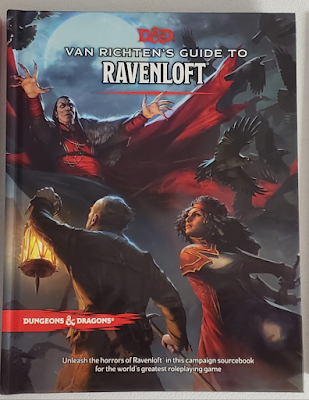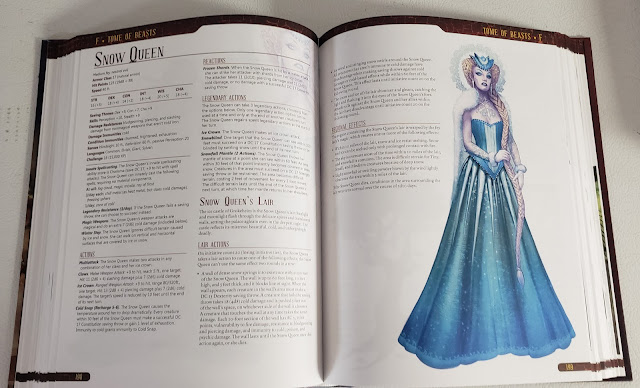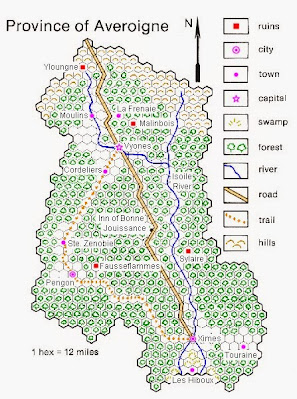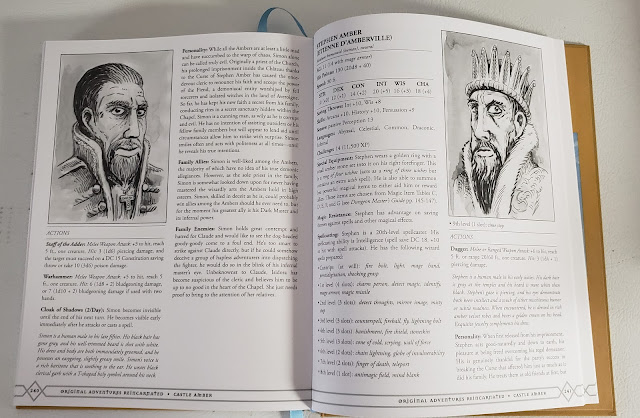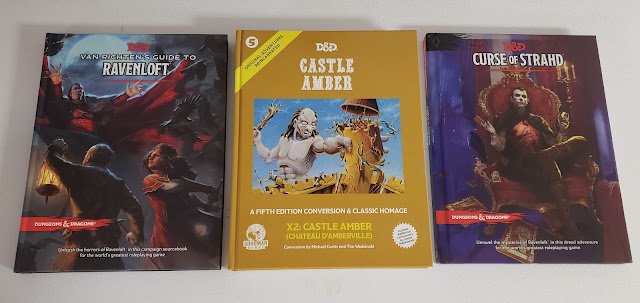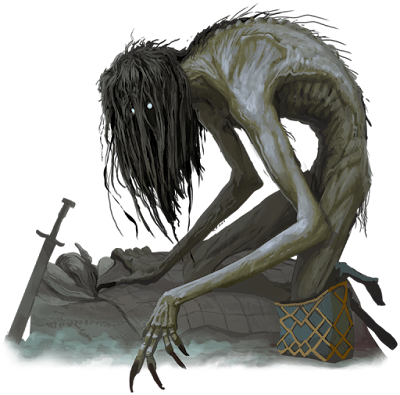Partying The Party RPG
 When the party is confronted with bush with golden, sparkling leaves, seeming to dance to a rhythm only it can hear and it implores with a booming voice for one of their number to dance because it has lost its magic and needs to be once again enthused with the ‘power o’ dance’ to get his jive, and the Game Master turns to her players and says that one of them must dance a dance of her choice in complete silence, and the other must guess what it is, then you know that this is no ordinary adventure, and no ordinary roleplaying game. When a Dorse—a mutant hybrid of a Horse and a Dragon—demands that everyone play ‘Naughty Imitation’ and impersonate a famous film star doing something naughty, then you know that this is no ordinary adventure, and no ordinary roleplaying game. When the party must create and perform a song or rhyme to open an emotionally needy chest, then you know that this is no ordinary adventure, and no ordinary roleplaying game. All of these sound like party games, which they are, and not like a roleplaying game at all, but these really are challenges presented in a roleplaying game which combines a classic fantasy quest to save the world with the type of games which will be familiar to a wider audience. This, when combined with simple, light rules, a straightforward plot, accessible presentation, and sense of humour, makes this roleplaying game almost the perfect means to introduce those unfamiliar to the concepts of roleplaying to their first actual roleplaying game.
When the party is confronted with bush with golden, sparkling leaves, seeming to dance to a rhythm only it can hear and it implores with a booming voice for one of their number to dance because it has lost its magic and needs to be once again enthused with the ‘power o’ dance’ to get his jive, and the Game Master turns to her players and says that one of them must dance a dance of her choice in complete silence, and the other must guess what it is, then you know that this is no ordinary adventure, and no ordinary roleplaying game. When a Dorse—a mutant hybrid of a Horse and a Dragon—demands that everyone play ‘Naughty Imitation’ and impersonate a famous film star doing something naughty, then you know that this is no ordinary adventure, and no ordinary roleplaying game. When the party must create and perform a song or rhyme to open an emotionally needy chest, then you know that this is no ordinary adventure, and no ordinary roleplaying game. All of these sound like party games, which they are, and not like a roleplaying game at all, but these really are challenges presented in a roleplaying game which combines a classic fantasy quest to save the world with the type of games which will be familiar to a wider audience. This, when combined with simple, light rules, a straightforward plot, accessible presentation, and sense of humour, makes this roleplaying game almost the perfect means to introduce those unfamiliar to the concepts of roleplaying to their first actual roleplaying game.The roleplaying game in question is The Party RPG: The Rise of Burden Bluggerbuckle, published by The Party RPG. Designed to be played by between three and six players, including a Game Master, it presents a Dungeons & Dragons-style fantasy adventure, played as a one-shot over multiple sessions, but with very light rules, a physical component—the players are encouraged to dress up as their characters if they want and there are plenty of physical challenges and games throughout the quest, and a presentation intended for the scenario for the game to be played from the page. There is also scope for the players to share the role of Game Master, swapping from playing to refereeing for a scene, and then back again, so that in a game of five players, everyone could have a go at being a Game Master several times. Although it can be played round the table like a traditional roleplaying game—or these days over Zoom—it does not have to be and could easily be run in the lounge over the coffee table.
The setting for The Party RPG: The Rise of Burden Bluggerbuckle is the Great Plains. Phosphorian, known for both his great villainy and his glowing member, has died. Upon hearing this tragic news, Burden Bluggerbuckle, his Orc boyfriend waiting at home in a floral apron, swears a mighty vengeance and sets out to cast the Enchantment of Unrelenting Rage which will rent the Great Plains in twain—at the very least! To save the Great Plains, a Squad—as opposed to a party which would confuse everyone in and out of The Party RPG: The Rise of Burden Bluggerbuckle—of doughty adventurers who undertake Main Quests and Side Quests. Main Quests to acquire the six pieces of the Counter Enchantment which will break the Enchantment of Unrelenting Rage and Side Quests to enhance their abilities and gain gear that will help them on their grand quest. Over the course of sixteen scenes and locations, the Player Characters will encounter an exploding goat (he gets better), shout to reveal hidden items, find a way over a broken bridge, hunt for buried treasure, impersonate pigs, run into belligerent chickens, and a whole lot more.
In The Party RPG, the players are free to create characters that are whatever they want. A Unicorn with a sense of adventure? A brave warrior who rolls into battle in her wheelchair? A lizardry, wizardy gecko? A pilfering Chameleon? A middle-aged accountant fighting evil in his pipe and slippers? All possible and perfectly acceptable. A character is very simply defined. He has five Skills—Stealth, Awareness, Strength, Intelligence, and Speed—rated between one and ten. A player simply assigns five points between these, buys some basic equipment for his character, describes who and what he is, and thus he is ready to play. Fantastically, everything that a player needs is laid out on the character sheet. So on the front, there are the five skills, plus a tracker for the character’s Hit Points, Level, and Experience Points, and places to record his weapons and shield, plus items and armour. On the back is a step-by-step guide to character creation and an explanation of what all of the terms are in The Party RPG. The character sheet is very nicely done.
Frau Blücher is a no-nonsense housekeeper who has no truck with the end of the Great Plains. Otherwise, where else is her G.O.A.T. goat, Heidi, going to graze and headbutt anyone she does not like?
Name: Frau Blücher
Skills
Stealth 1
Awareness 2
Strength 0
Intelligence 1
Speed 1
Equipment: Simple Wand, Basic Leather Armour, Soap
Mechanically, The Party RPG is very simple, although it uses two resolution systems. The first is when the Player Characters are acting against the environment, such as climbing a tree or fording a fast-flowing stream, or when they are engaged in combat. This requires the player to roll three six-sided dice and add any bonuses from his character’s Skills and items of equipment. The aim is to roll high, with possible results including Pivotal Successes, Successes, Fails, and Epic Fails. For example, a task set at Moderate has a Pivotal Success threshold of fourteen or more, Success threshold of eleven and up, a Fail threshold of ten and below, and an Epic Fail threshold of seven or less. It is as simple as that. In general, Pivotal Successes, Successes, Fails, and Epic Fails will be set by the Game Master, though weapons and shields have their values, which will be better for the items purchased or found later in the quest. Damage is dependent on a Player Character’s Level—either one, two, or three six-sided dice, armour detracts from inflicted damage, and shields can totally deflect or partially block damage, and even break! A Pivotal Success result on an attack roll ignores the effects of armour.
The other resolution system, which is for Player Character versus NPCs, is dependent upon the Level of a Player Character or NPC—again one, two, or three six-sided dice. These are rolled and added together with the appropriate Skill Levels of both the Player Character and the NPC, and the highest result wins. Although simple enough, in fact, both mechanics are simple enough, it feels a little odd to have two separate, quite different systems for a game that is aiming to be as easy as it is.
The ease of play for The Party RPG is facilitated by its layout. Every location is broken down into a series of sections. The first section always sets out the objectives the Player Characters have to complete and instructions for the Game Master. This is followed by sections which set the scene, give handy tips, and always ends with one giving the suggested Experience Point awards depending on how well the Game Master thinks her players and their characters performed in the location. This ranges from ‘Abysmal’ and ‘10XP’ to ‘Terrific’ and ‘80XP’. A total of one hundred Experience Points are required for a Player Character to go up a Level—so will typically occur at every other location and grant a bonus Skill level, plus Hit Points, and enable a Player Character to use better equipment. Throughout the location, boxes in bold colours highlight what the Game Master needs to act upon—so red for combat or active actions like sneaking past some Goblins; blue for treasures to be rewarded to the Player Characters; purple for a physical out of game action, such as singing or dancing; green for ending a scene. The layout and these boxes further make The Party RPG easy to run from the page.
However, running The Party RPG does require some page flipping when it comes to combat and shopping—all of the stats for the NPCs and the equipment that the Player Characters can obtain through visiting shops or being rewarded are at the back of the book. A bookmark or two, should offset this issue to some extent.
Physically, The Party RPG is cleanly and tidily laid out. The writing varies depending upon the subject matter. It does tend towards bullet points in its style for a lot of the rules explanations. This is not an issue for the experienced Game Master, but anyone coming to the game anew will not find it as easy as it could have been. In comparison, the writing of the quest is more expansive and humorous and entertaining, so more engaging to read. The book’s artwork is excellent, but really too small for the Game Master to enjoy or use to add colour to the running of the game. It would have been great if the artwork had been larger and thus could have been shown to the players as their characters progressed onwards as part of their quest, and thus helped them envision the world their characters are exploring. One other effect of the writing and the simplicity is that The Party RPG is easy to prepare. An experienced Game Master will be able to read and grasp what is all going on the page from a simple readthrough.
However, as clever and as fun and as silly as The Party RPG: The Rise of Burden Bluggerbuckle is, it is not without its issues. The first one is the tone, which is adult in nature—though not explicit—and as written, The Party RPG is not suited for play by younger audiences, which is a pity given the simplicity and physicality of the roleplaying game. Of course, the Game Master can tone down or remove the adult humour during play, but perhaps the inclusion of alternative text better suited for younger and family audiences would have widened the accessibility of The Party RPG Second, the rules are simply not as well explained as they could be. This is not a matter of discounting their simplicity, but rather that they are more clearly explained for the Game Master than her players. Now there are examples of the three types of mechanics—Player Character versus the environment, versus NPCs, and combat—in The Party RPG, and they help, but there is no clear explanation otherwise. Third, once play is underway, there is no guidance from situation to situation as to the suggested scores for Pivotal Successes, Successes, Fails, and Epic Fails for the challenges the Player Characters will face. For the experienced Game Master, setting these suggested scores is not really going to be all that difficult, but anyone new to this type of game, it will be challenging, and makes The Party RPG not quite as readily suited for new Game Masters as the designers intended.
So is The Party RPG: The Rise of Burden Bluggerbuckle actually a roleplaying game? The answer to that is both yes and no. Yes, because the players are rolling up and creating characters and having go away on adventures just like Dungeons & Dragons—or in the case of Dungeons & Dragons meets Toon or Dungeons & Dragons meets Tails of Equestria – The Storytelling Game. But no, because there are no means or advice to create anything other than a playthrough of ‘The Rise of Burden Bluggerbuckle’, and as a roleplaying game, The Party RPG is very much tied to that story line. So, it is more of a one-shot or a mini-campaign, but still a roleplaying game.
Throughout The Party RPG: The Rise of Burden Bluggerbuckle, both Game Master and players, but especially the players, are encouraged to be inventive and creative, not just in terms of creating their characters, but also in terms of how they approach different situations. In return, the Game Master is encouraged to take these ideas on merit, to give them a chance to work, no matter how preposterous, and so support an inventive, slightly over-the-top, even a little silly style of play. Throughout, The Party RPG: The Rise of Burden Bluggerbuckle never gets away from the fact that its play should be fun. Which also includes the physical elements that are likely to be more acceptable to a wider, more family audience than necessarily to a roleplaying audience, and that means that The Party RPG: The Rise of Burden Bluggerbuckle could actually work as an introduction to roleplaying games (though it is not quite as suitable for new Game Masters as it could have been). Although it might not be for everyone, but for anyone ready to embrace its silliness, its simplicity, its scope for inventiveness, and its physicality, The Party RPG: The Rise of Burden Bluggerbuckle has the potential to be huge fun.
